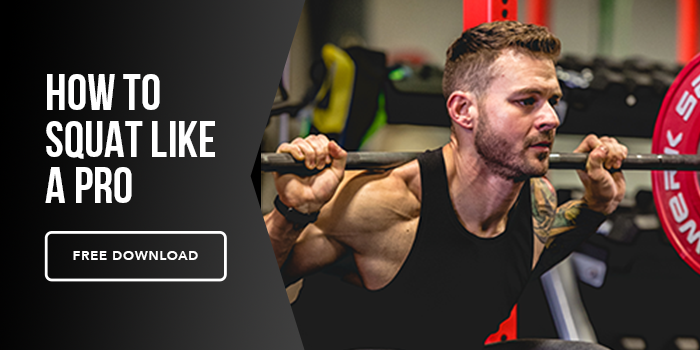Like the toddler at the park who told me I’m “too short to be an adult,” squats give it to you straight.
They don’t flatter you. They don’t care how long you’ve been training. They just expose what’s weak, tight, or compensating — one rep at a time.
Bad ankle mobility? They’ll show it. Pelvis tucking under load? Noted. Core giving up halfway down? Squats have receipts.
And that’s exactly why they work.
No other lift demands this much coordination, tension, and effort across the entire body. Done well, squats build strength, reveal dysfunction, and challenge your system in a way that machines and hacky substitutions just… don’t.
Let’s break down why the barbell back squat still earns its title — and how to do it in a way that builds more than just your tolerance for discomfort.
Why the Back Squat Stands Out
It’s not just that the barbell back squat is hard — it’s that it trains so many things at once.
You get:
-
Multi-joint movement across the hips, knees, and ankles
-
High levels of motor unit recruitment
-
Significant loading potential (i.e., it scales well with strength)
-
A massive anabolic stimulus via systemic fatigue and hormonal response
-
Transfer to both aesthetics and athletic performance
Few other movements train the body as a coordinated unit under a compressive load — which matters for both structural resilience and raw output.
And from a programming perspective, the squat is foundational. Even when it’s not your main lift, its movement pattern informs everything from lunges to step-ups to hack squats.
The Biomechanics of a Good Squat
Let’s talk mechanics — because most squat issues come from misunderstanding your own anatomy.
The back squat is a hip and knee extension exercise, but the contribution of each joint depends on your setup:
-
Forward knee travel = more quad demand
-
Hips pushed back = more glute and adductor demand
-
Torso angle = affects spinal loading and moment arms
If you lack ankle dorsiflexion, your knees won’t travel forward — which shifts the hips back, increases the moment arm at the glutes, and reduces quad recruitment.
Translation: if you can’t get into the right position, your quads don’t get the stimulus they should.
This is where smart lifters don’t just “squat to depth” — they squat to the best available range with their structure, then improve that range over time.
You Don’t Have to Go ATG — But You Do Have to Be Honest
The dogma around squat depth has created more bad reps than good ones.
Yes, full range of motion squats create better hypertrophy and strength outcomes when done well. But not everyone has the mobility to sit “ass to grass” with a neutral spine and vertical torso.
So instead of chasing Instagram-worthy depth, focus on:
-
Maintaining spinal stiffness
-
Keeping heels down
-
Tracking knees in line with toes
-
Stopping before pelvic tuck or lumbar compensation
If that means you squat to a box, elevate your heels, or work within a slightly limited ROM — that’s fine.
What matters is tension, not terrain.
It’s Not Just a Leg Exercise — It’s a Skill
Back squatting is a high-skill movement.
It demands:
-
Intra-abdominal pressure and core bracing
-
Scapular retraction and upper back tension
-
Foot tripod stability and ankle control
-
Coordinated eccentric and concentric phases
That’s why novice lifters often feel awkward — and why chasing progressive overload too quickly backfires. You have to earn the movement before you can load it.
But once the skill is grooved, the squat becomes a training economy cheat code: high output, high carryover, and a ton of adaptations packed into one movement.
Squat Variations Aren’t Cop-Outs
Not everyone needs to barbell back squat year-round — or at all times.
Your femur length, pelvis shape, spine curvature, and ankle mobility all impact how well a back squat fits your body.
Alternatives like:
-
Front squats
-
Safety bar squats
-
Heel-elevated trap bar squats
-
Hatfield squats
-
Belt squats
…can often provide a better stimulus with less joint stress and better quad bias, especially when hypertrophy is the goal.
But those are alternatives — not excuses. The goal is to train the squat pattern in a way that lets you load effectively, not just avoid discomfort.
Why Most People Quit Squatting — and Why You Shouldn’t
Let’s be honest: people skip squats because they’re hard.
- They tax your CNS
- They demand perfect setup
- They punish poor mobility
- And they make you feel like gravity’s out for revenge
But those are also the reasons squats drive progress. They reveal weaknesses — then make you stronger in those exact areas.
Sticking with squats (in some form) gives you:
- Stronger quads and glutes
- Better pelvic control
- Improved bracing and core coordination
- Higher work capacity
- More total muscle growth
They’re not just a lift. They’re a diagnostic tool.
Squats for Size vs. Squats for Strength
Let’s distinguish goals.
-
If you’re training for hypertrophy, your squat setup should bias the target tissue through full tension and controlled range. You may want to modify stance, use heel elevation, and prioritize stability.
-
If you’re training for maximal strength, you’ll emphasize mechanical advantage — which may involve more posterior chain recruitment, less forward knee travel, and heavier loads.
Same lift. Different intent. Know what you’re chasing, and build your setup around that.
The Bottom Line
The squat challenges your whole body. It exposes mobility limits. It forces control, coordination, and composure under load. And when done right, it delivers more return on investment than almost anything else in your program.






